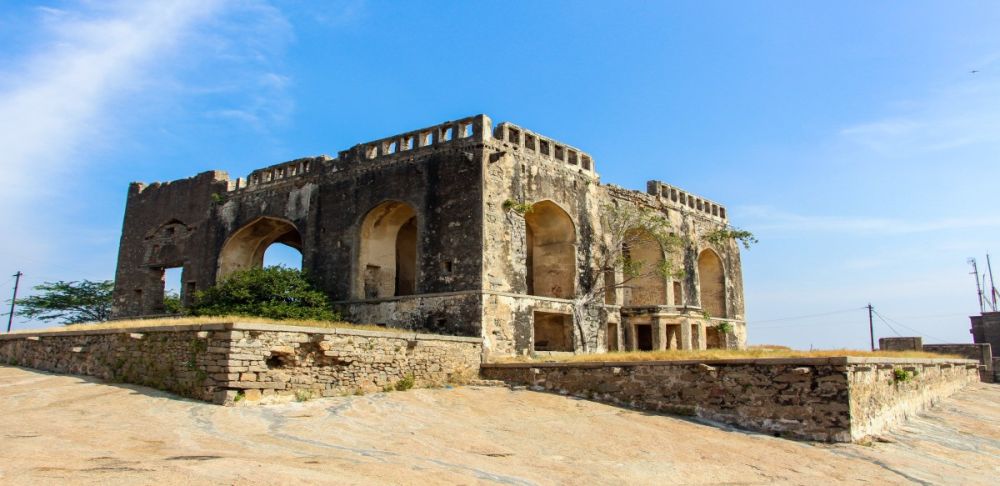

Bhongir Fort, a prominent landmark of Nalgonda in Telangana, India, stands atop a monolithic rock at a height of around 500 feet above the ground. The history of Bhongir Fort dates back to the 10th century and is closely associated with the Chalukya dynasty. It was built by Tribhuvanamalla Vikramaditya VI and was named after him as 'Bhuvanagiri', which eventually became Bhongir. Over the years, the fort has witnessed several dynastic changes from the Chalukyas to the Kakatiyas and subsequently passed hands to the Bahmanis, Qutub Shahis, and eventually the Mughals.
The fort became a point of interest for tourists, historians, and archaeologists from the colonial era. However, organized tourism development commenced post-independence, with the Archaeological Survey of India (ASI) taking measures to preserve and restore this ancient fort. Since then, it has become an important historic site, reflecting the diverse architectural styles of various dynasties that ruled the region.
Bhongir Fort gained more visibility and accessibility as the Indian tourism sector emphasized promoting cultural heritage. Local authorities, as well as the government of Telangana, have been working to improve the infrastructure surrounding the fort, making it more tourist-friendly.
In recent times, adventure tourism has been introduced in and around Bhongir Fort. Activities such as rock climbing and rappelling are becoming increasingly popular, catering to adventure enthusiasts who visit the fort. This has reintroduced the fort as a destination for not just history buffs but also for those seeking adventure and outdoor activities.
Sustainable tourism practices are also being encouraged, with initiatives to maintain the integrity and cleanliness of the fort premises. Efforts to enhance visitor engagement through digital guides, informative signboards, and interactive sessions on the history of Bhongir Fort have been implemented, providing a comprehensive experience to tourists.
Bhongir Fort is open to the public on all days. Visitors are advised to wear comfortable footwear as there is a considerable amount of climbing involved. The best time to visit is from October to March when the weather is relatively cooler.
Accessibility: The fort is easily accessible via road from Hyderabad, which is approximately 50 kilometers away. The nearest railway station is Bhongir, which connects to various major cities in India.